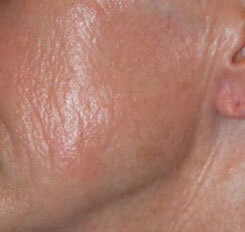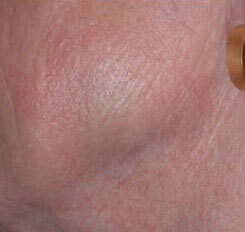Do you want to feel better? Are you tired of looking weathered and aged? Have people ask you about your secrets to skin care? The answer is chemical peels that treat hyperpigmentation, sun spots and fine wrinkles.
Learn the benefits of beauty by rejuvenating your skin through chemical peeling and help you feel refreshed. Feeling better about yourself can make everything that happens in your life a little bit better.
Dr. Philip Young who has studied beauty for the past 12 years and developed a new theory on facial beauty. He received the Sir Harold Delf Gillies Award from the American Academy of Facial Plastic and Reconstructive Surgery for his theory on facial beauty. He uses his advanced knowledge based on his theory and 24 years of higher education and performing surgical procedures to bring you the best methods on skin care and chemical peeling.
A chemical peel exfoliates the skin's top layers to reveal the softer and healthier skin below. Chemical peels are used to treat a variety of skin conditions, including environmentally damaged hyper pigmented skin, sun spots, acne, and fine wrinkles. In many cases, wrinkles caused by sun damage, age and your genetic predisposition can be reduced and eliminated through the use of a series of chemical peels.
Irregular skin pigmentation, sun-damaged skin, and even precancerous keratosis may also improve with chemical peels. Studies have shown that chemical peels can actually reduce your chance of developing skin cancer by removing pre-cancerous cells and allowing new cells to resurface your skin. The strength of the chemical peel is determined by each patient's individual skin type and the degree of damage to the skin.
Here are some instructions for a beginner’s skin care regime:

Before Chemical Peel Trichloroacetic Acid, Jessner’s, Dermasanding Cheek

After Chemical Peel Trichloroacetic Acid, Jessner’s, Dermasanding Cheek
Note: Individual results will vary. Images do not constitute a promise or representation of any particular outcome or experience.
We offer an array of peels from superficial to the deepest types through our registered nurses and physicians. This include Glycolic acid peels, Jessner's peels and the Trichloroacetic acid peel. We have extensive experience in all types of chemical peels and we feel these three choices cover the full range of treatment from the most superficial peels to the deepest types of chemical peels that can be safely done as possible. We can tailor an approach just for you.
For quick superficial peels, we can help you with 10-20% Glycolic peels that contain alpha-hydroxy acid peels and originate from fruit. They can be used for conditions like melasma, acne, seborrhea, photo aging, and post inflammatory hyperpigmentation. They can lead to slight redness but with no significant peeling making for a quick recovery.
Glycolic acid peels have anti-inflammatory, keratolytic, and antioxidant properties. Glycolic acids are hydrophilic meaning that they are more attracted and blend into water. They are less likely to penetrate oily barriers; our skin contains a lot of oil. This property prevents alpha-hydroxy acids from deeper penetration into the skin than beta-hydroxy acids that are lipophilic or oil attracting.
Glycolic acids attack the desmosomes, the structures that bind cells together, which can lead to the breakdown of the skin cell's adhesion to each other. It causes the cells to come off your body. The depth and intensity of the peel is based on the concentration of the acid, the amount of acid applied, the techniques used, and the medium which it is carried in. You will have slight redness for less than an hour depending on your skin. They are superficial refreshers that can improve your skin over time. For stronger peeling, we can increase the percentage of the glycolic peel up to 20-30%. That’s when we employ the help of Jessner's peels.
“My goal was to find a method to bring back a person’s natural youthfulness without the operated, unnatural look and that is why I have my patients bring in photos of them when they were age 5 to 30. My YoungVitalizer helps restore natural and youthful contours they haven’t seen in years.”
—Dr. Philip Young, Seattle Facial Plastic Surgeon




Jessner's Peel is made of 14 g of resorcinol, 14 g of salicylic acid and 14 g of lactic acid dissolved in enough ethanol to make a total of 100 cc/ml of solution.
Salicylic acid is a beta-hydroxy acid, an oil soluble that penetrates deeper than alpha-hydroxy acid peels. The connection of epidermal skin cells depends on desmosomes, which contain many proteins like desmogleins. Salicylic acid attacks desmosomal proteins. The attachment of epidermal skin cells is broken leading to the breakdown and removal of progressive layers of the skin. Beta-hydroxy acid peels are able to control sebum production, a major contributor to poor skin issues. Oily skin can be cosmetically unacceptable and be uncomfortable for people.
Overactive sebaceous glands can cause excessively oily skin by secreting and producing sebum, the source for skin's oiliness. Sebum can block pores and serve as a "buffet" for bacteria to flourish and lead to conditions like acne. With anti-inflammatory and anti-bacterial properties, salicylic acid and beta-hydroxy acid can reduce the bumps and spots from acne and other skin conditions and remove the surface layers of skin to help refresh your face for clearer skin.
Lactic Acid is also an alpha-hydroxy acid peel and a bigger molecule than glycolic acid so it penetrates less. They work the same way treating dark spots, wrinkles, acne, skin scarring, surface wrinkles, large pores and oily skin.
Resorcinol is one of the main natural phenols in argan oil used in the deepest type of peels. Dr. Young has performed phenol peels in the past but no longer does phenol peels. He uses resorcinol for its effectiveness in treating a number of skin conditions related to its antibacterial, antifungal, local irritative, and keratolytic actions. Resorcinol causes protein precipitation and breaks down the skin like other hydroxyl acids. It has been used to treat acne, seborrheic dermatitis, eczema, psoriasis and other skin conditions.
Trichloroacetic acid peels have been used for over 100 years. Most clinicians do not use more than 35% concentration. We will use up to 80% concentration for ice pick scars. These peels can be used for improving skin tone, fine lines, melasma, hyperpigmentation and facial scarring, including acne scarring.
This chemical is similar in structure to vinegar and the only chemical peel approved by the FDA for treating precancerous skin lesions (Actinic Keratoses). The peels cause precipitation of proteins and coagulative necrosis to cell in the skin. As the concentration increases, you can get deeper penetration. Knowing the multiple layers of the skin and how they react to the application of the peels allows your doctor to know how deep the peel is getting. We typically like to use 35% TCA with Jessner's for a medium depth peel.
During your initial consultation with Dr. Young, you will be advised to stay off blood thinners and stop taking fish oil, vitamin E, herbal medications, supplements, aspirin and anti-inflammatories a week or two week prior to treatment. This reduces the risk of bruising. You will have the opportunity to ask questions and relay any concerns and fears with Dr. Young.
Let Dr. Young know any of the prescriptions, over-the-counter remedies, herbal supplements, and oral or topical products that you take, and whether you may be pregnant. It is important to stay off blood thinners and medications two weeks prior to your procedure.
You will have the opportunity to ask questions and relay any concerns and fears with Dr. Young.
You can email, call 425-990-3223 or text 425-341-3893 to set up an appointment. If you live out of town, we can schedule a phone consultation with you.
For one week before and after your peel, you may be advised to stop using electrolysis, waxing, depilatories, masks, peels or dermabrasion, Tretinoin (vitamin A creams), lightening creams, hyperpigmentation skin products and aggressive cleansing with a loofah. Aggressive skin care using Retin A, lightening creams and glycolic creams are to be avoided until two to four weeks after your peel. It depends on how deep the peel is applied.
You should avoid direct exposure to the sun for extended periods of time for the first week or two after your peel and up to six months after deeper peels. During the first two to four weeks post-peel, you should also avoid other activities that would aggravate your skin like exfoliation or waxing.
After a chemical peel you will be instructed to care for your skin similarly to how we care for our patients after CO2 resurfacing. You will recover much faster with lighter and more superficial peels while deeper peels will be similar to a recovery with CO2 laser resurfacing. In general, we advise that you follow the same post procedure care as with CO2 resurfacing until your skin completely epithelialized and show one or all of these signs:
Once you have completely epithelialized, you can start your regular skin care regimen with something like cetaphil gentle cleanser and lotion (or equivalent). You will want to start slowly on your regular skin care to make sure you are not too sensitive to it. Increased sensitivity to your regular products is quite possible initially. We can suggest some products based on what your type of skin.
The type of chemical peels that we do can range from very minimally invasive to significantly deeper. One thing to remember is that the more aggressive you approach the chemical peel, the more results you will get but with a longer recovery and risks.
Another resurfacing modality is CO2 laser resurfacing. The principles are similar with each resurfacing taking down layers of the skin. The skin cells from deep within the hair follicle grow and resurface the skin that has been taken down.
The result is new skin and a layer of collagen underneath it to help with fine wrinkles, uneven pigmentation, and surface irregularities and moles. You also decrease the number of bad cells and refresh them with new cells. It has been shown with medium to deep chemical peels and laser resurfacing that the number of precancerous cells and lesions declines. Your chance of skin cancer decreases with resurfacing.
The iS Clinical Facial is also known as the “Fire and Ice Facial” or the “Red Carpet Facial” in Hollywood. This intensive clinical facial is designed to rapidly and safely resurface your skin, reduce fine lines and wrinkles and encourage cellular renewal. The resurfacing mask is clinically formulated with 18% un-buffered glycolic acid, lactic acid, citric acid, malic acid, retinol, vitamin B3 and potent antioxidants, including green tea extracts.
The Rejuvenating Masque is a soothing and hydrating treatment formulated with hyaluronic acid, aloe vera, green tea extract, licorice extract, grape seed extract and rosemary extract. This incredible facial masque is complemented by a unique combination of serums and creams. Awakening your senses, this system incorporates active and soothing formulas, which evoke aromas of warm cinnamon spice and brisk cool peppermint.
Microdermabrasion is an excellent treatment for someone who wants more results with little or no downtime. It rejuvenates and revitalizes your skin and increases collagen production to give you a more youthful appearance. It can improve your skin by eliminating or control skin problems such as large pores, clogged pores, dull skin, congested skin, fine lines, wrinkles, acne scars, poor skin texture, brown spots and skin discoloration.
This gentle solution is formulated primarily for ethnic skin and other extremely sensitive skin types. Sensi Peel will strengthen and brighten your skin while treating sun damage and other forms of hyperpigmentation (skin discoloration). This multi faceted treatment provides anti-inflammatory, anti-acne and antibacterial action-making it an excellent choice for helping calm rosacea. Redness and inflammation can subside substantially after your treatment.
Specially formulated to treat dehydrated and maturing skin, Ultra Peel is appropriate for many skin types, conditions and sensitivities. It helps treat smoker’s skin, pigment disorders, sun damaged skin and acne. This treatment is especially ideal for sensitive skin since it produces only a mild tingling sensation. Moderate to aggressive exfoliation will be experienced depending on the number of layers applied. Overall, the final result will be plump, hydrated and ultra-soft skin.
This peel will even skin tone and provide more exfoliation for oilier and resilient skin types. It is effective on extremely sun damaged and thickened skin. This peel works well for those with active/cystic acne and asphyxiated skin (dry on the surface, oily underneath). The key ingredients are lactic acid, resorcinol, salicylic acid, kojic acid, hydroquinone, and citric acid.
This is an antioxidant therapy that corrects and prevents free radical damage from oxidative and environmental stress to the skin, which contributes significantly to the aging process. This treatment stimulates respiration and circulation within the skin, promotes healing and rejuvenates sluggish and stressed skin depleted by toxins, pollutants, allergens, improper diet and solar damage.
Acneic conditions can also benefit greatly. Appropriate for use between peel treatments or when exfoliation or flaking is not desired. You can use this antioxidant therapy two or three days before a special event because it draws oxygen to the skin’s surface and produces a rosy flush and a rapid warming sensation that result in a radiant and healthy look that lasts up to ten days.
